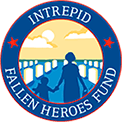What are Aircraft Engine Cowlings?
Cowlings are removable covers that are used for aircraft engines in order to reduce drag and increase cooling for temperature control. Despite their importance for the overall performance of the aircraft, cowlings are often structures that are not given the attention they deserve. When one needs to install a cowling on their aircraft for a repair or for the first time, it is crucial that the cover is shaped to the installation or adjusted to optimally fit. As such, proper cowling installation should always be carried out.
While cowlings are used for the engine, they are never directly connected to the engine or supported by it. Instead, cowlings are cantilevered from the firewall of the fuselage. This is because the firewall is a static, unmoving object unlike an engine that is placed on rubber shock mounts. If the cowling was attached to the engine itself and the fuselage, damages would quickly ensue. One should also avoid purchasing one-piece cowling installations if possible as they require the removal of the propeller and spinner for their installation and removal.
If an increased amount of engine cooling that is controllable by the pilot is desired, cowl flaps can be implemented in the cowling installation. With the ability to adjust the size of cooling exits, pilots can mitigate the build-up of heat during strenuous climbing procedures. While beneficial, cowl flap installation can be more complex as it requires connections and testing prior to operation. For many aircraft, a cowling with optimal air inlets and outlets may be sufficient for cooling needs. When determining which assembly type may be best for a particular aircraft, test flights should be conducted to determine if cowl flaps are needed or not.
Engine cooling issues may result from other factors as well, such as if the top portion of the cowling is thin and flexible. In such instances, reinforcement strips should be used to increase the rigidity of the assembly and riveting or epoxying may be used. A flexible and thin cowling is detrimental to performance as air can pressurize the top side of the engine compartment and cause the cowling to bulge up. When this occurs, pressurized cooling air will begin to leak between the cowling and baffles.
When constructing the oil access door, it is important that it is not too small or located above the oil dipstick. Due to the slanted orientation of the oil dipstick, the oil inspection door should be placed further aft. A larger oil access door is also beneficial for cowlings which are installed by a piano wire hinge installation as it will allow for an increased reach for installations. For other methods, some builders utilize a fiberglass portion cut out from the cowling to create the oil access door.
When conducting the cowling fitting, one may either butt the cowling against the firewall or lap the cowling over the fuselage skin. While butting the cowling results in streamlined outer surfaces, lapping the cowling is a more simplistic operation that is regularly used for slower aircraft. The fitting of the cowling should be done when the engine is already installed as it will make the process much easier. With the use of a plywood jig and spacer blocks, the cowlings may then be attached and cut so that the aft end matches the firewall in a flush installation. With the use of reference lines and tooling, the cowling can be trimmed to remove excess materials while retaining an optimal gap.
When you are in need of top quality aircraft engine cowling components that you can steadily rely upon, look no further than NSN Sourcing. NSN Sourcing is an online distributor of aircraft parts that have come from top global manufacturers that we trust. To ensure that customers only receive what is best, we subject every item to rigorous quality assurance testing and inspection prior to shipment. If you would like to receive a competitive quote on items for your comparisons, complete and submit an RFQ form as provided on our website. Get started today and see why customers choose to rely on NSN Sourcing for all their operational needs.



